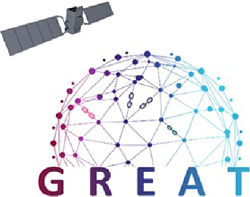Currently, GNSS reference networks are costly infrastructures that need specialized equipment and high costs for installation and maintenance. For this reason, most of the public and private GNSS networks are not very dense in the European territory and much less Worldwide.
At the same time, a large number of new applications, highly demanding in terms of positioning accuracy, would need to receive real-time differential corrections from reference stations that are 15 km or less far away. In this context, the density of the GNSS networks could become a key factor for the development of innovative services, ranging from mass market (e.g. for high precision positioning/navigation on new generation smartphones where raw GNSS measurements are available) to more specialized application domains (e.g. for GNSS-based real-time structural and geophysical monitoring). Moreover, some new safe sensitive applications such as autonomous driving and drones’ navigation will need reliable networks of reference stations that shall be redundant and resilient not only to local spoofing and jamming attacks, but also in general to cyber-attacks and emergency situations (e.g. earthquakes or natural disasters).
It appears that in the very few last years some chipset manufactures started delivering very cost effective multi-constellation multi-frequency GNSS chipsets but with performance allowing millimetric to centimetric level accuracy respectively in static and RTK (therefore like the state-of-the art professional GNSS receivers).
In this scenario, the purpose of the GREAT project is the development, test and demonstration of the next generation of low-cost GNSS reference stations, which guarantee performance comparable to the ones of current geodetic grade receivers but with costs (in terms of equipment, setup and maintenance) up to one order of magnitude lower than the present standards.
The final goal of the project aims at the realization of infrastructures that bring the advantages of differential GNSS processing (both real-time and post-processing), in terms of precision and accuracy ranging from sub-meter (DGNSS technique) up to millimetre level (static differential processing), to the widest community of end-users as possible.







